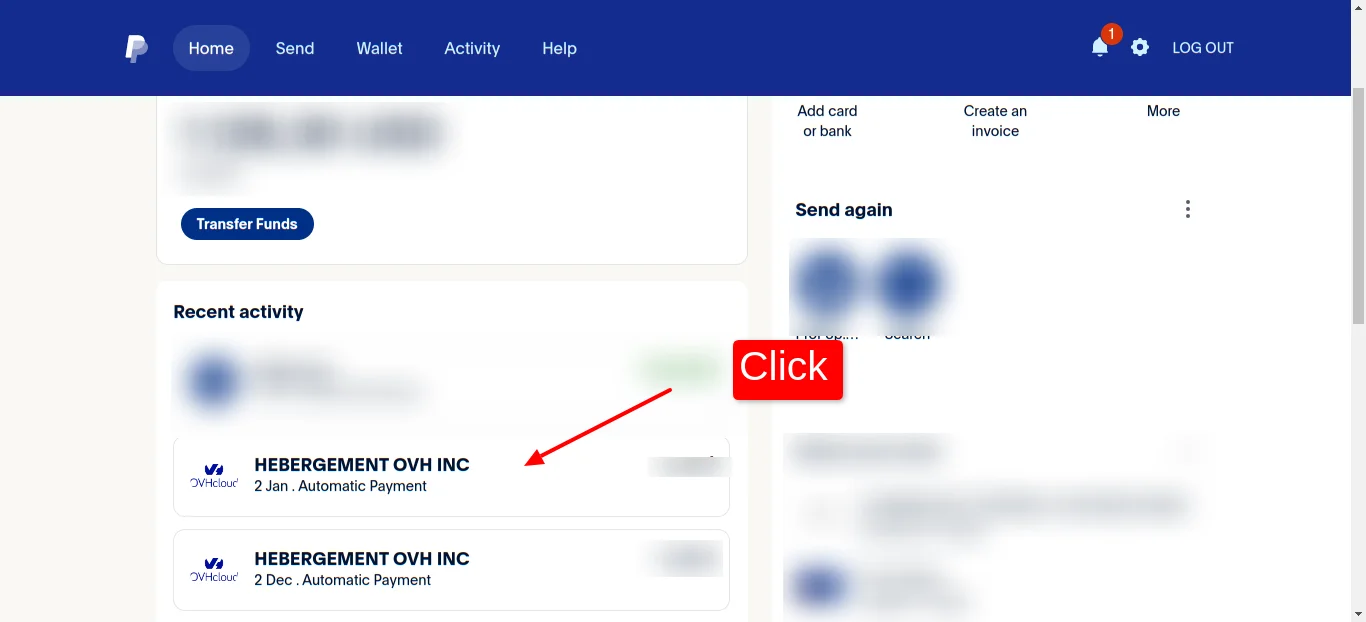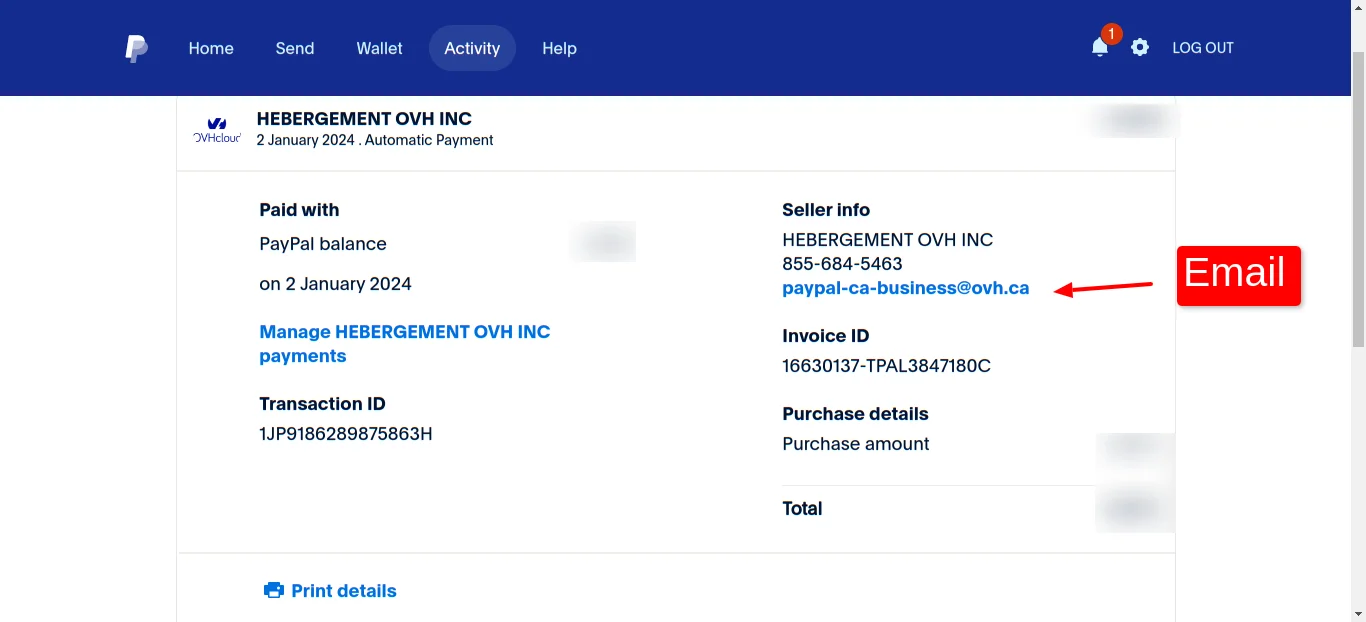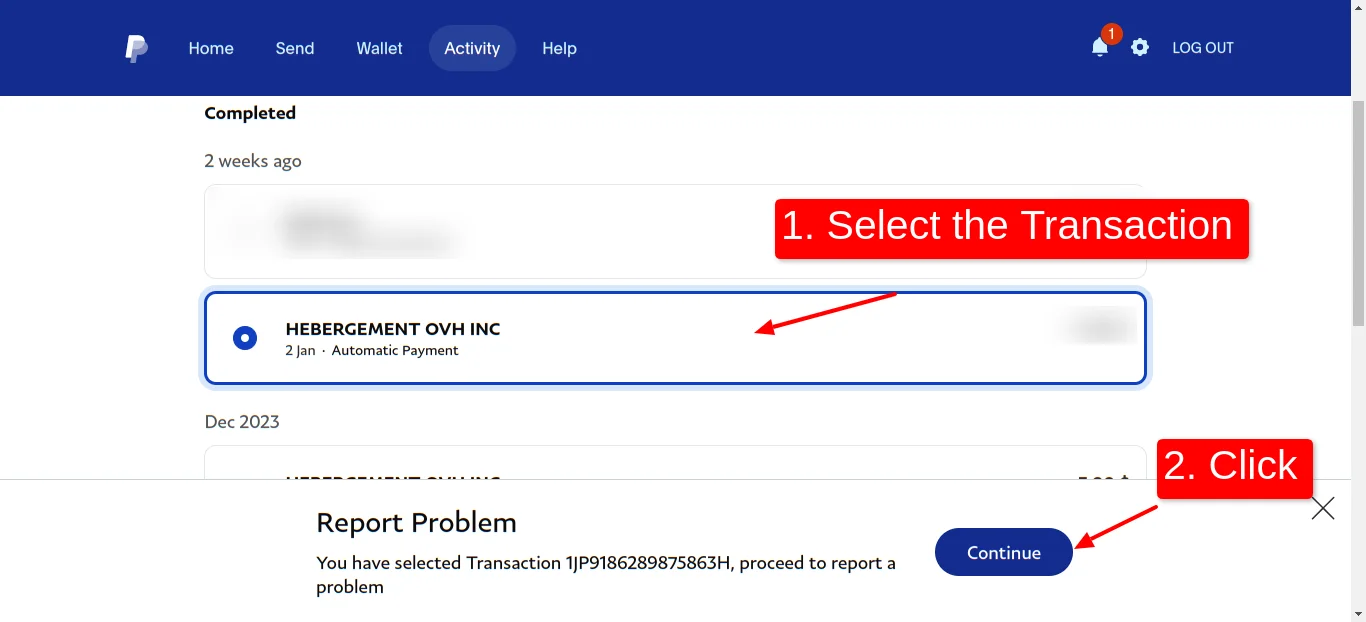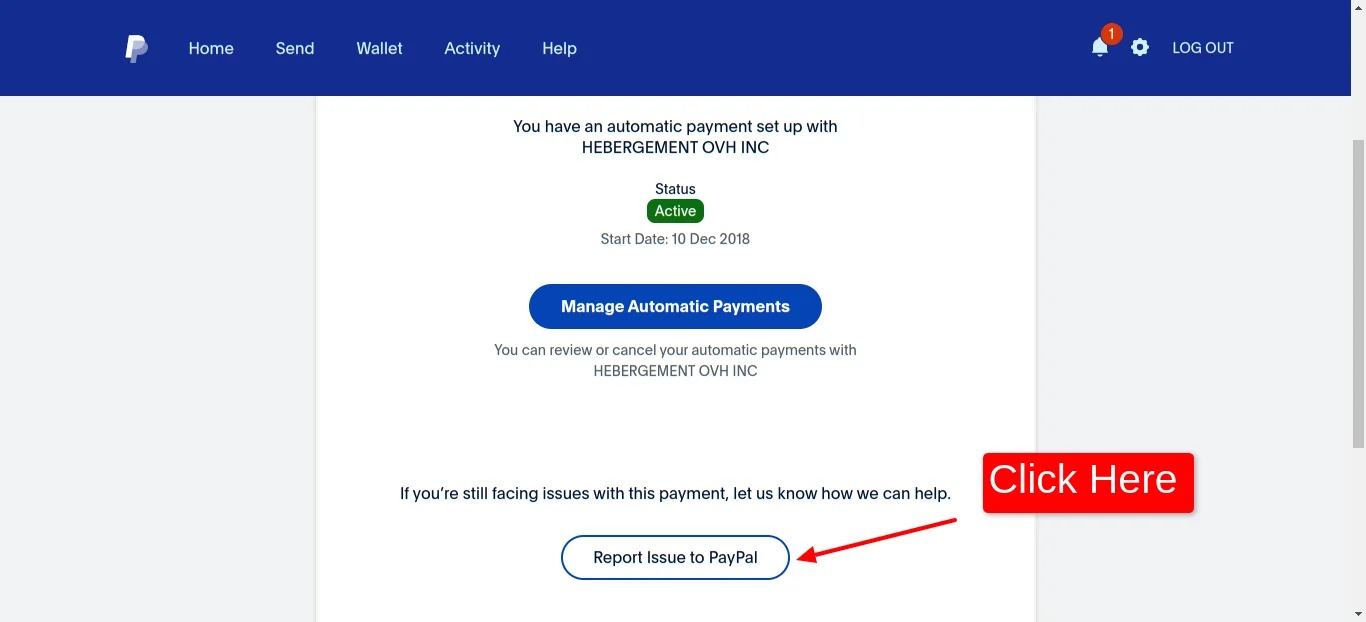Getting your money back after being scammed online might seem tricky, but don't worry – this guide is here to make it easy for you. In simple words, we'll show you the steps to take to get your money back after falling victim to online scams.
Whether you bought something that never arrived or clicked on a fake link, our simple advice is here to help you through the process of getting your money back. Let's start the journey to reclaiming what's rightfully yours!
Recovering Funds Paid via PayPal
If you've been scammed and paid through PayPal, follow these simple steps to increase your chances of getting your money back:
1. Contact the Seller
If you don't have the seller's email, you can contact them through PayPal transaction details. First, log in to your PayPal account, then find the payment and click on it to get all the seller's information. Here is an example:


After obtaining the seller's email, send them an email explaining the issue and requesting a refund. If the seller doesn't respond or refuses a refund, move on to the next option.
2. Open a Dispute
Opening a dispute on PayPal is a straightforward process. Here's a step-by-step guide on how to open a dispute:
1. Click on the "Resolution Center" tab. This is usually located at the top of the page.

2. In the Resolution Center, you'll see the option to "Report a Problem." Click on this option.

3. Find and select the transaction related to the issue you want to dispute.

4. Click Report Issue to Paypal.

PayPal will prompt you to choose the type of issue you're facing (e.g., "I didn't receive my item" or "I received an item that is significantly not as described"). Select the most relevant option.
Follow the instructions to provide details about the problem. Explain the situation clearly, and attach any supporting documents or evidence.
After providing the necessary information, double-check the details, and click the "Submit" or "Continue" button to initiate the dispute. PayPal will notify the seller about the dispute, and they will have a chance to respond.
It's important to note that you have a 180-day window from the transaction date to open a dispute.
Recovering Funds Paid via Bank transfer or Direct debit
If you paid using a bank transfer or direct debit and you want to attempt to reclaim your money after falling victim to an online scam, here are some general steps you can take:
-
Gather Information:
- Collect all the relevant information about the scam. This includes the date of the transaction, details about the recipient (such as their name and account details), and any other relevant information about the scam.
-
Visit Your Bank:
- Go to your bank in person, if possible, or contact them through their customer service channels. You can usually find the customer service phone number on your bank's website or on the back of your debit card.
-
Speak to a Bank Representative:
- When you connect with the bank representative, explain the situation calmly and provide all the gathered information. Let them know that you have been a victim of an online scam, and you want to inquire about the possibility of reclaiming your money.
-
Request to Open a Dispute:
- Specifically ask about the process of opening a dispute for the transaction. In some cases, this may be referred to as initiating a chargeback.
-
Provide Details of the Scam:
- Clearly explain the nature of the scam. Describe how you were misled, why you believe it was a fraudulent transaction, and any other details that might be relevant.
-
Follow Bank Procedures:
- Your bank will guide you through their specific procedures for handling such disputes. This may involve filling out a dispute form or providing additional documentation.
-
Provide Evidence:
- If you have any evidence supporting your claim, such as emails, messages, or screenshots related to the scam, share this information with the bank. It can strengthen your case.
-
Monitor the Progress:
- The bank will initiate an investigation into the disputed transaction. Keep a close eye on the progress and follow any instructions or updates provided by the bank.
Keep in mind that each bank may have its steps to follow, so it's important to listen to the advice given by your bank's representatives. Acting quickly and giving them the right details will improve your chances of resolving the issue successfully.
Recovering Funds Paid via Wire Service
If you paid through a wire service like MoneyGram, PayPoint, or Western Union, here's a guide on what you can do to potentially reclaim your money:
-
Gather Transaction Details:
- Collect all relevant details about the transaction, including the date, amount, sender and receiver information, and any reference or confirmation numbers provided by the wire service.
-
Contact the Wire Service:
- Reach out to the wire service's customer support as soon as possible. You can typically find their contact information on their website or in the transaction confirmation.
-
Explain the Situation:
- Clearly explain to the customer support representative that you believe you've been scammed and provide details about the fraudulent transaction. Mention any evidence you have, such as emails, messages, or other relevant information.
-
Request a Refund or Stop Payment:
- Inquire about the possibility of a refund or stopping the payment if the funds haven't been picked up by the recipient yet. Some wire services may have policies in place to assist victims of fraud.
-
File a Complaint:
- If the wire service is uncooperative or if you suspect criminal activity, file a complaint with your local law enforcement and provide them with all the details of the scam. They may be able to investigate and take appropriate action.
-
Contact Regulatory Authorities:
- In some cases, you may want to contact regulatory authorities overseeing the wire service industry in your country. They may have processes in place to handle fraud-related complaints.
-
Monitor the Transaction:
- Keep a close eye on the transaction status. If the funds haven't been picked up, there may be a chance to stop the payment or recover the funds.
-
Educate Yourself:
- Learn about the policies and procedures of the specific wire service you used. Some services may have specific protocols for dealing with scams and fraud, so understanding their processes can be beneficial.
-
Be Cautious in the Future:
- Exercise caution when using wire services for online transactions. Be wary of deals or offers that seem too good to be true, and always verify the legitimacy of the recipient.
Remember that the ability to reclaim money sent through wire services can vary, and success may depend on how quickly you act and the specific policies of the service provider.
Conclusion
While getting your money back after an online scam can be daunting, this guide has equipped you with the knowledge and tools to fight for what's yours.
Don't hesitate to follow the steps outlined for your specific payment method, and remember, acting quickly and with evidence is key! Now, go forth and reclaim your financial justice!
